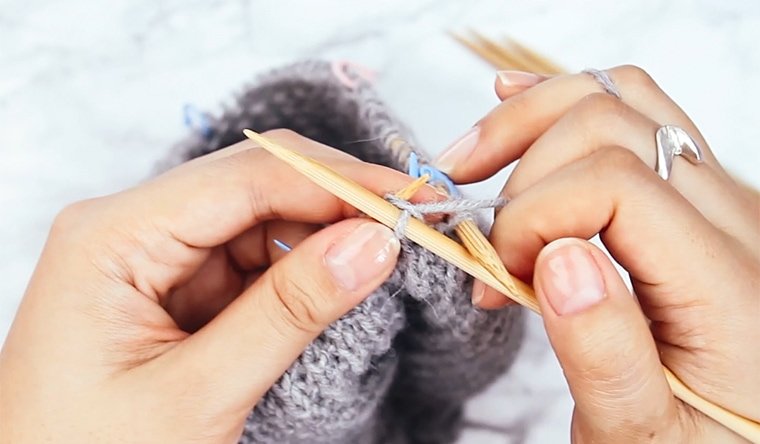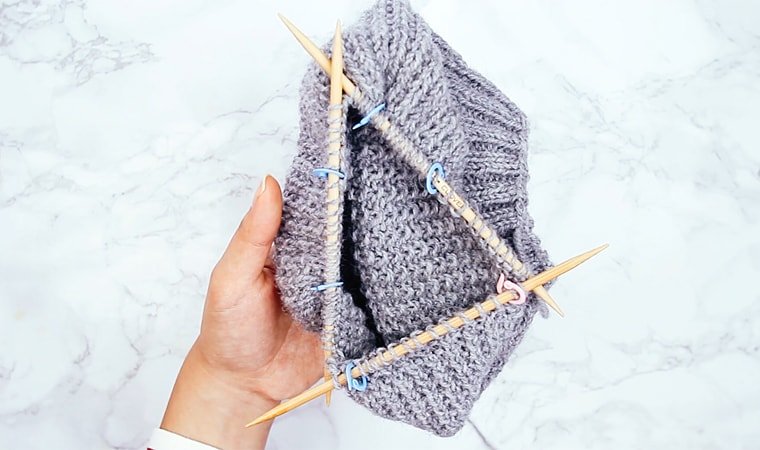How to Divide Stitches on Double Pointed Needles
If you're knitting a hat on circular needles, at some point, you'll need to switch to double pointed needles (DPNs).
In this post, I'll show you two methods to transfer stitches from circulars to double pointed needles. This technique is super helpful when knitting hats and mittens.
The first transfer method is the easy and long way. The second is the hard and short way (it's not actually hard, just harder relative to the first method). Both methods will show you how to transfer your stitches to double pointed needles in no time at all.
The Easy & Long Way to Transfer Stitches
This method involves transferring stitches one by one from circulars to DPNs.
First, count up the number of stitches on the circular needle. (Let's say you have 84 stitches). Then, roughly divide the total number of stitches by the number of double pointed needles you'll be knitting with.
For example, if you'll be knitting with three DPNs, divide the total number of stitches by three (84 divided into three is 28). This means that each DPN will have 28 stitches.
Pick up and transfer 28 stitches from the circular needle to one DPN. Then, use the second DPN to pick up the next 28 stitches. The third DPN will pick up the remaining 28 stitches.

Make sure to pick up the stitches as if to purl. This ensures that the stitches are not twisted.
Once all the stitches have been moved to the DPNs, bring out the fourth DPN and begin knitting in the round. You've now fully transferred your stitches to DPNs!
The Harder & Shorter Way to Transfer Stitches
This second transfer method involves knitting the stitches directly off of the circular needle and onto the DPN. This method bypasses the need transfer first and knit second. By knitting directly off the circular needle, we're transferring and knitting the next round in one fell swoop – much quicker!
Begin by counting up the number of stitches on the circular needle. (Let's say you have 84 stitches). Then, divide the total number of stitches on the circulars by the number of DPNs you'll be knitting with.
For example, if you'll be knitting with three DPNs, divide the total number of stitches by three (84 divided into three is 28). This means that each DPN will have 28 stitches.

Now, instead of transferring the stitches to the DPN, you'll use the first DPN to knit into the stitches on the circular needle. Follow the next row of your pattern as you knit.
Once you've knit 28 stitches, bring out the second DPN and continue knitting for another 28 stitches. The third DPN will knit the remaining 28 stitches. Now all the stitches have been transferred to DPNs, and you've also worked one round to boot. So productive!
TIP: When you're deciding which round to switch to DPNs, choose an "easy" round. For instance, choose a stockinette stitch round if possible instead of a round that calls for decreases.

Whichever method you choose, once all the stitches have been transferred to three or four DPNs, you're ready to start knitting in the round with DPNs. Need a refresher on how to knit with double pointed needles? Check out this tutorial all about knitting with DPNs.
How to Divide Stitches on Double Pointed Needles
Source: https://sheepandstitch.com/library/how-to-switch-to-double-pointed-needles/